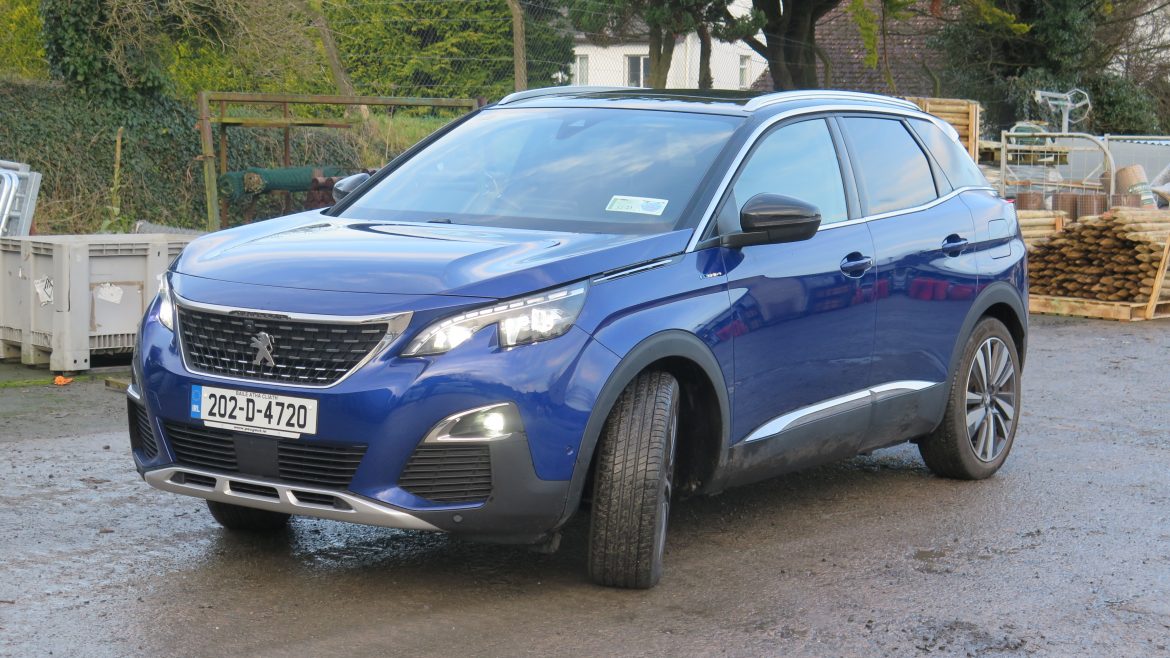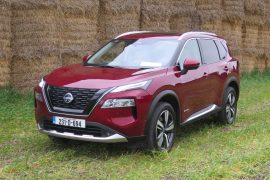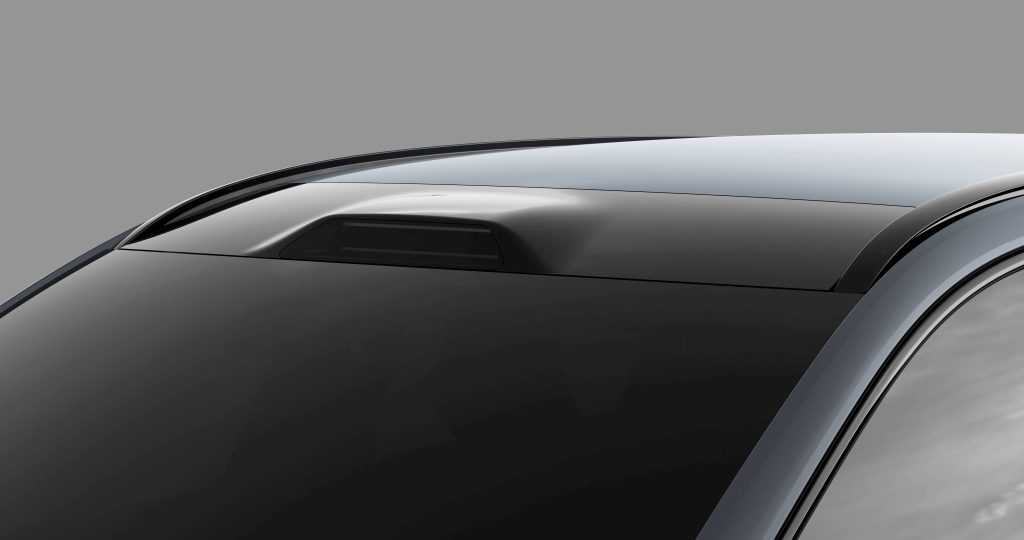The move to more electric power continues at a pace and virtually all car brands are now wheeling out new models with greater emphasis on hybrid power than the traditional petrol or diesel internal combustion engine (ICE). Peugeot has been to the forefront of these moves with options of petrol or diesel engines, plus plug-in hybrids (PHEV’s) and full electric power now available across most models in the range.
Those Peugeot power options gives great scope to make comparisons when it comes to fuel choices. Peugeot’s 3008 model provided me with that opportunity during the current COVID-19 lockdown. It proved that in my new world of limited driving, I could survive with a PHEV vehicle.
I’ve been running the Hybrid4 GT version of the 3008 for a number of weeks now and I’m getting very comfortable with the car, its strengths and limitations. The engine performance is massive and that delivers great acceleration when put to the test. This is a PHEV car that has limited range on full charged electric power with the back-up comfort of an excellent 1.6 litre turbo-petrol engine as the primary power source.
The hybrid system is as seamless as it gets. Most of my driving was with the car in combustion mode rather than full electric power. That delivers a very smooth driving experience with some benefits of electric regeneration from the car’s efficiency system.
The PHEV system is rated to give a range of over 50km for local driving. That should be enough to cover your driving range in a lockdown and it does. But the test car never achieved that even from an overnight charging where I struggled to get over 40km range.
Out on the road during late December I had the opportunity to give the car a longer test and here the petrol economy figures illustrate why PHEV’s have a place but it’s a place that’s at its best during short trip local driving. PHEV’s come with a heavy battery pack and that’s one of the downsides, adding significant additional weight to the car.
And that’s proven by the official kerb weight figures for the Peugeot 3008 Hybrid4 which at 1840kg is 410kg heavier than the equivalent Euro 6 1.5 litre turbo-diesel powered model. This means that when driving in petrol mode, which will be the case for most rural drivers, the car is penalised by being significantly heavier than its diesel equivalent.
That weight burden converts into an interesting fuel economy discussion. Over nine weeks I’ve driven the Peugeot 3008 Hybrid4 almost 1,800km and used almost 150 litres of petrol. That converts to fuel consumption figure of 12km/litre of petrol compared with a diesel engine figure of 20km/litre. And diesel is still 10 cent/litre cheaper at the pumps.
The car’s computer told me at the outset that the range using the combination of the petrol engine and the PHEV drive would be just over 1,080km and that’s very comparable with a modern clean diesel engine car. While I could have been diligent in my use of the PHEV charging system, every night and I wasn’t, the PHEV systems range is so low that if the journey is long, you tend to disregard it. But in practice, the diesel engine option delivers equivalent if not better economy for rural drivers, with the only downside being the NOx emissions that are totally missing from the PHEV version.

There is so much to like about the Peugeot 3008 Hybrid4, in terms of smoothness and ability to deliver local and cost-effective driving in a lockdown. The eight-speed automatic gearbox adds to the pleasant driving experience.
The car’s high-voltage battery pack is located under the back seats, without affecting the spaciousness and the boot space above the floor mat. That means there is no loss of boot space which is impressive in itself. That PHEV battery is guaranteed 8 years, 160,000 km for 70% of its charge capacity. Its location really helps the balance of the car, which makes for great handling.
If found that the Peugeot iCockpit has better visibility in terms of driving position than in some of the smaller Peugeot cars. The digital control system is easy to use and it reality you rarely change the settings once you get the one that you want, in my case the fuel range figure.
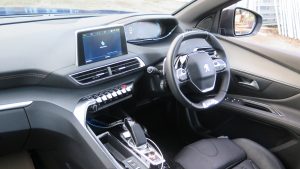
There is also a large central display area with touchscreen control and full Apple CarPlay facility. The mix of frost and snow conditions meant a test for the heating system, which is impressive and gives a very fast windscreen clearing effect in very cold weather.
The car is overdue a Euro NCAP crash testing assessment and we can expect that soon with predictable good results. Otherwise there are ample safety features with three ISO-fix child seating attachments, two in the outer rear seats with the third in the front passenger seat.
There are two models in the Peugeot 3008 PHEV range, one of which drives only the front wheels while the more powerful Hybrid4 version that I drove gives power to the front and rear wheels to give a 4×4 driving sensation with great handling for a SUV. The test car comes with a price list of €44,360, that’s €4,500 more expensive than the equivalent diesel model.
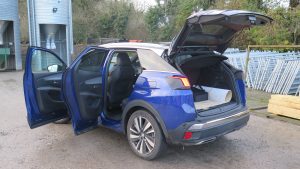
Peugeot has an upgraded version of the 3008 on the way during 2021 with new front-end styling and changes to the iCockpit design, while retaining the same level of PHEV performance. Worth waiting, probably yes, but do look at your annual use levels in terms of kilometres driven before making that final choice. Clean diesels will be around for another while, despite the pending legislation.
| Peugeot 3008 Hybrid 4 GT PHEV v Peugeot 3008 1.5 HDi – specifications | ||
| Peugeot 3008 Hybrid 4 GT PHEV | Peugeot 3008 1.5 HDi diesel | |
| Engine | 1.6 litre | 1.5 litre |
| Engine power | 300bhp | 131bhp |
| Engine Torque | 320Nm | 300Nm |
| 0 – 100km/hr | 6.1 seconds | 12.6 seconds |
| Economy | 77km/litre (1.3l/100km or 217mpg) | 20km/litre (5.0
l/100km or 56mpg) |
| Fuel Tank Capacity | 43 litres | 53 litres |
| CO2 emissions | 29g/km | 135g/km |
| Range Theoretical | 1080km | 1060km |
| Road Tax Annual | A1 €140 | B2 €210 |
| Main Service | 20,000km/12 months | 20,000km/12 months |
| Euro NCAP Rating | 5 Star (2009) | 5 Star (2009) |
| Turning Circle Kerb to Kerb | 10.67 metres | 10.67 metres |
| Kerb weight | 1840kg | 1430kg |
| Towing rating | 1250kgs | 1300kg |
| Luggage Capacity | 591 litres/1670 litres | 591 litres/1670 litres |
| Warranty | 8 years | 8 years |
| Entry Price | €44,360 | €39,800 |

